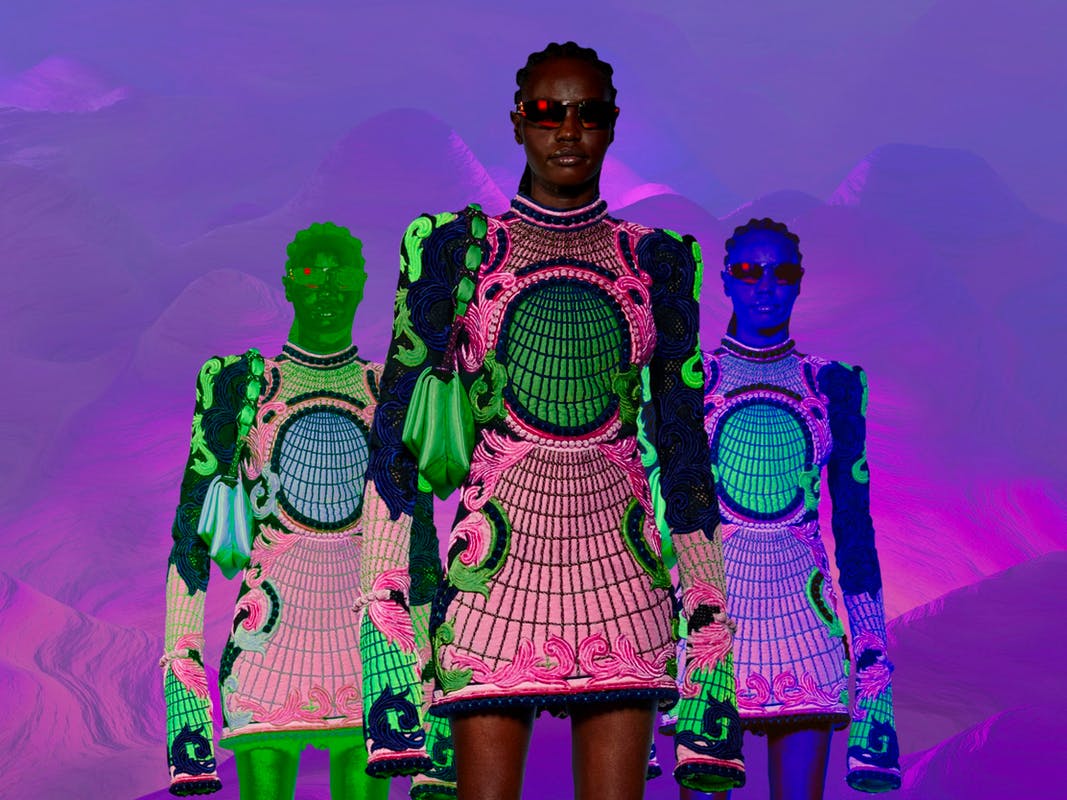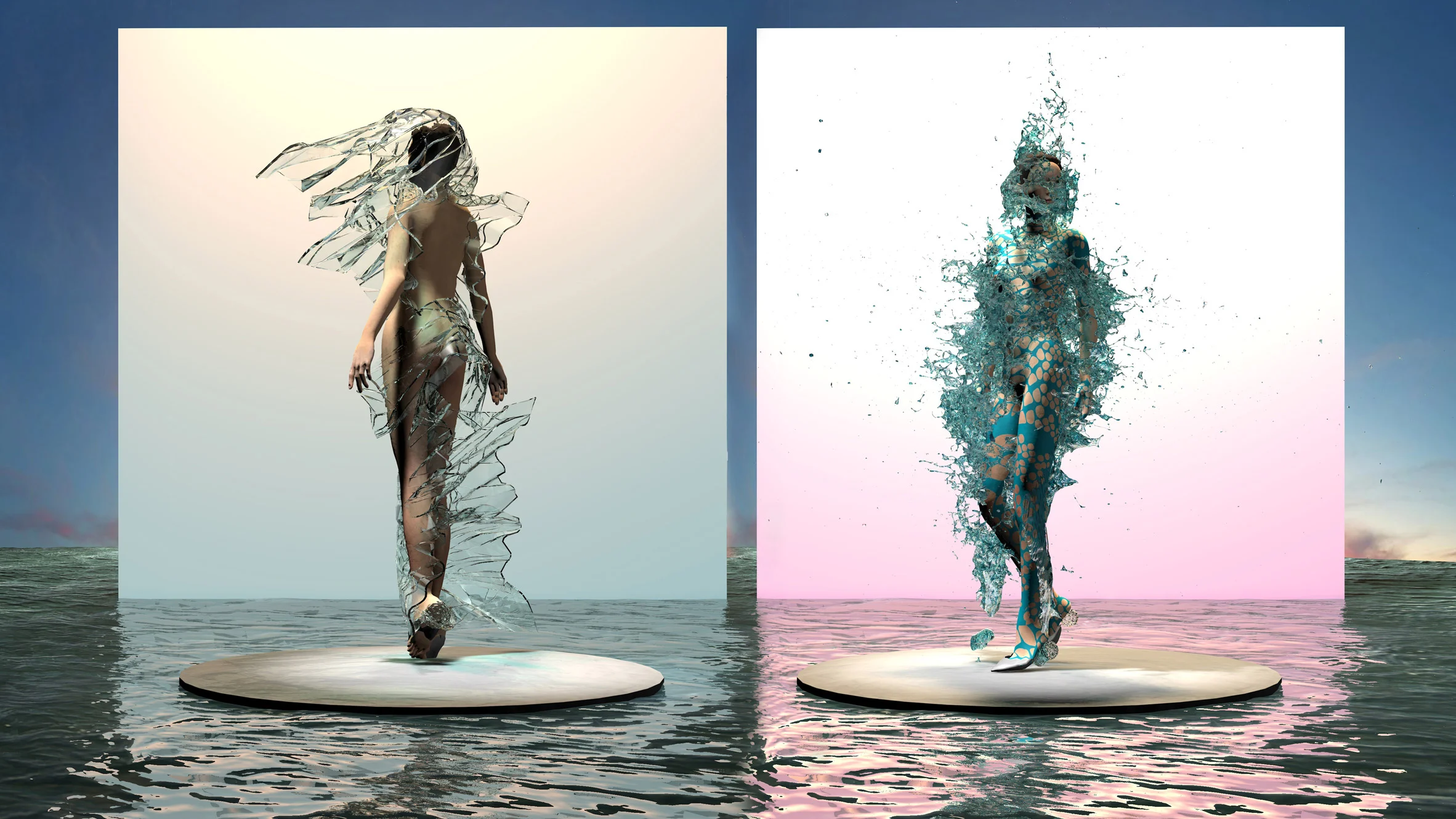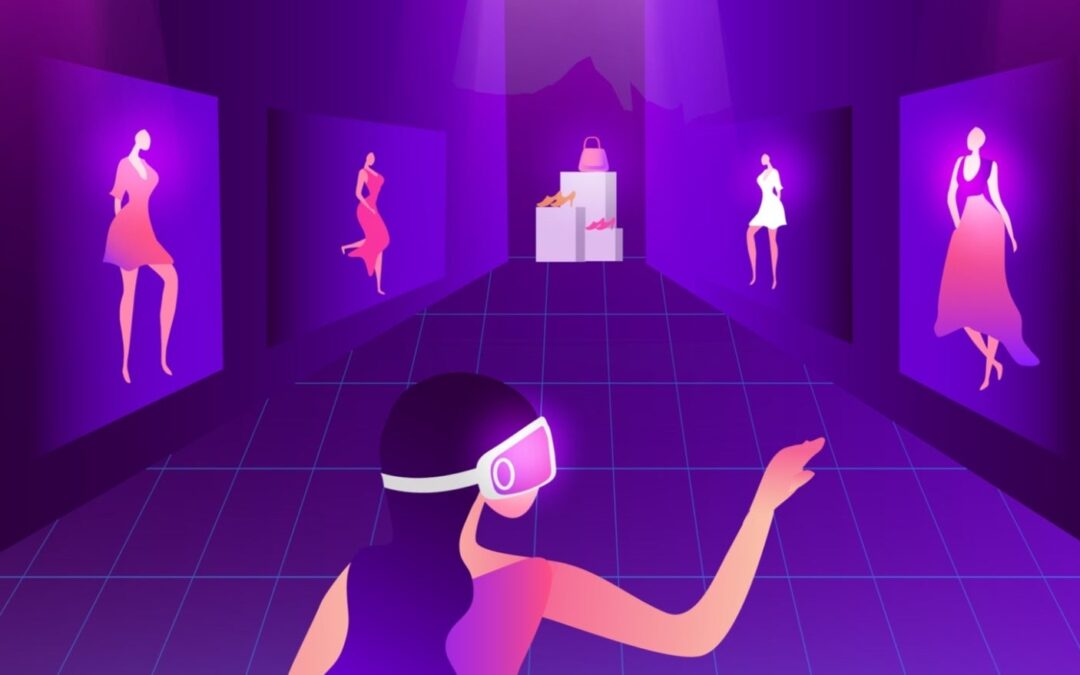Throughout history, fashion has been a definitive indicator of the generation that people live in. When we look at a photo or a painting, it is easy to estimate which era it is from just by looking at the clothes. Now, as we are moving into a new age with the metaverse, fashion is once again catching up faster than most industries. New business models that make use of virtual fashion may have more chances thanks to artificial intelligence and augmented reality. Model avatars have walked 3-D virtual runways thanks to technology that enables 360-degree views, which has already been used to exhibit seasonal collections through online showrooms. There had been a fashion show dedicated to the fashion of the metaverse already.
During the Metaverse Fashion Week that took place in Decentraland this spring, a wide variety of brands and creatives, including Etro, Dundas, Dolce & Gabbana and Estée Lauder displayed their take on the metaverse fashion. The entire event was based on the blockchain technology, created on land sold as NFTs and digital fashion bought and worn as NFTs; giving an idea of how various items will be bought, sold and used in the future of the internet. NFTs can be utilized in the fashion industry to authenticate goods or act as standalone collectibles. Additionally, there has been a surge in interest over the past year, notably among wealthy players and online. For its 200th anniversary, Louis Vuitton released a video game with collectible NFTs that were largely created by Beeple.

.
Metaverse fashion has been brewing as a concept for the past few years. London-based fashion designer Scarlett Yang created a garment in 2020 that looked like glass, changed texture in response to temperature and weather, and dissolved if it was left in water. To realize her project Yang began by experimenting with technologies such as virtual reality and 3D. Yang’s dress was also presented in digital format, encouraging viewers to observe four different renders of the gown. Yang was among the designers who participated in the Metaverse Fashionweek. Yang is among the new generation of designers who seamlessly transition between the realms of virtual design and physical manufacturing.
Contemporary fashion houses like The Fabricant, DressX and the Dematerialised don’t produce physical garments. For the most part, this quick move towards digital design is not surprising. Since people started spending more time online because of Covid-19, more wanted to express themselves virtually in the way gamers would in multiplayer platforms like Fortnite. This paved the way for the metaverse and popularized ideas like digital representation or avatars. These developments are changing the way we understand fashion. Now, the idea of moving freely between different 3D realms and communities with the help of virtual and augmented reality doesn’t seem like a far-fetched idea.

With the rising popularity of NFTs and blockchain, there has already been a considerable shift in the market. According to Morgan Stanley, metaverse gaming and NFTs may account for 10% of the market for luxury goods alone by 2030, representing a €50 billion sales potential and a 25% increase in the sector’s profit margin. Brands who are eager to turn this momentum into gains have been experimenting with metaverse platforms, NFTs and virtual designs for the past two years. While Balenciaga appeared in Fornite in October, Diesel announced at Milan Fashion Week it would release NFTs in addition to physical clothes. Moreover, other luxury brands like Gucci and Tommy Hilfiger created their own virtual stores and metaverse experiences to carry their legacies into the next generation of technology.
On the other hand, as metaverse technologies become more available, non-luxury retailers also come up with creative ways to utilize them as well. There are currently a number of shopping apps with features that one can use to “try on” virtual garments or accessories before buying them. These AR and VR extensions change the way we shop for clothes and in the future they can be used to try on interesting virtual designs that cannot be produced physically by digital only designers, like the Dematerialised . Furthermore, we can own the same clothes with our avatars in our everyday life; creating a seamless transition from our digital self to the physical one. Marjorie Hernandez, co-founder of the Dematerialised and of the blockchain platform Lukso, argues that in the coming years physical garments can be authenticated as NFTs and have a digital twin.

Another Interesting idea about metaverse fashion is how it may be able to address issues like the inefficient and exploitative production techniques that plague the industry. A possibly sustainable variation on self-expression is provided by digitized fashion. Online fashion updates might eliminate the need to continue supporting the wasteful and exploitative fast fashion production. This way, users can express their styles without having to buy new garments every time a new trend comes along. All these new possibilities make the metaverse fashion an exciting new frontier not only for producers but also the consumers.
On the other hand, beyond clothing items, brands’ ventures into the gaming industry through the metaverse platforms mean that there are exciting possibilities for consumer experiences. Fashion contenders are looking at the $176 billion gaming industry, which attracts more than three billion players globally each year, especially given the appeal of engaging with and building communities in games and other virtual worlds. In order to introduce their brands to the metaverse, the likes of Gucci and Balenciaga have already started hosting massive live events, gamified shopping experiences and NFT giveaways to release their digital creations. Gucci Garden in the Roblox gaming metaverse saw 19 million visitors to it. As the metaverse lifts the restrictions of the physical world, it becomes more and more attainable for brands to create entirely unique designs and experiences to reach wider audiences.

